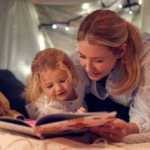
Top tips: Building resilience
Resilience is a person’s ability to adapt, recover and thrive in the face of challenges and setbacks. Investing in children’s resilience will support their confidence, health, and well-being now and in the future. Take a look at our top tips for building resilience in young children.
Top tips for building resilience
- Provide key people to develop strong attachments with children, ensuring each child has a person that knows them well, tunes into their needs and is responsive to their feelings and emotions
- Build connections through providing a sense of security, through routines, boundaries and friendships in a safe environment where children feel safe taking risks and seeking support when needed
- Create a supportive emotional environment that includes places for children to relax and sleep. Adopt some mindfulness approaches such as breathing activities or yoga and ensure there are lots of opportunities for outdoor play, fresh air and exercise
- Share strategies for building resilience with staff and families, talking about what resilience is and why it is important
- Provide opportunities to talk about emotions, e.g. “I’m pleased that you are happy”, “I can see you are feeling upset and worried”
- Use stories and puppets to support children to understand a range of emotions according to their developmental level
- Give children time to resolve their own problems before jumping in with solutions. When resolving problems, include children in finding solutions, e.g. “You both want to play with the red car but we only have one red car. What are we going to do?” Support children with some options if they need help, such as, “Do you think you could take turns?” or “Could you both use a green car, as we have two green cars?”
- Model resilience – children learn through observing your reactions, so show them how you deal with emotions and disappointment. Be open, honest and genuine
- And above all continue to love, praise and encourage children to help build confidence, self-esteem and belief in themselves.
NDNA products to support you with this tip
Developing Self-Regulation, Supporting Well-Being – Live virtual classroom
Disclaimer: Activities with children must always be risk assessed, including for allergies or choking. Children must always have adequate supervision. Resources and materials must always be appropriate for children’s age and stage of development.
- EYFS
- MyNDNA
Similar Articles
Top tips: New year new energy - supporting your team
As we get ready to step into a new year, it’s a perfect opportunity to embrace fresh beginnings, renewed…
Read more 
Early years activity: Cosy calm den
Periods of excitement or routine changes can often feel overwhelming for young children, bringing extra…
Read more 

